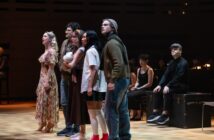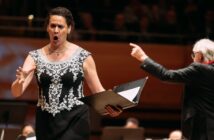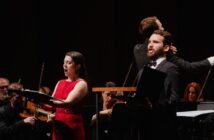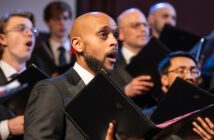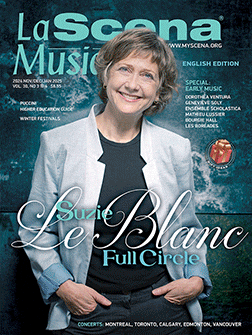HAMBURG – “Suche Karte.” Seeking ticket. This is always a good sign, quite literally, in German-speaking lands, where it is common to advertise your unhappy condition with two words writ large on a piece of cardboard.
Sure enough, a visit to the box office of the Elbphilharmonie confirmed that the fifth installment of the Orchestre Métropolitain’s tour of Europe was quite sold out. Eight thousand requests, 2,100 seats. Suche Karte.
The huge demand cannot be reconciled with the usual explanations. Soloists Marie-Nicole Lemieux and Jean-Guihen Queyras are reputable enough, but hardly the stuff of a sellout.
Yannick Nézet-Séguin is recognized everywhere. Still, Hamburg is not his town. Indeed, the closest thing this city has to a resident North American maestro is Hamburg State Opera Generalmusikdirektor Kent Nagano.
And the repertoire? Pierre Mercure, Berlioz, Saint-Saëns and Elgar: this is not a menu made with the hambourgeois in mind.
Clearly there was something about the romance of a little-known Canadian orchestra making its big-time overseas debut that captured the imagination of the Hamburg public.
“For 37 years this orchestra stayed in Canada,” YNS told the crowd after a manifestly excellent performance of Elgar’s Enigma Variations. “Now it is outside Canada for the first time.”
This ignited a burst of applause. We even got a shout of “Thank you” after the encore, Ravel’s Pavane pour une infante défunte, played with songful woodwinds and the softest strings imaginable.
There was a fair amount to be thankful for, including the setting, the breathtaking Elbphilharmonie, a 110-metre-high fantasy of curved-glass panels sitting improbably on top of the brickwork remains of a 1963 waterfront warehouse.
It is remarkable inside as well. Escher-esque staircases lead up and up to a room of terraced seating at various levels, including some that are rather Alpine. There is a parterre but the concept is distinctly of music in the round.
As for the design, it is not so much futuristic as retro modern. There are curves that would not have been out of place at Expo 67. Surfaces, perhaps inevitably, are off-white, and embossed with shell-like indentations in the interest of diffusing the sound.
Which was superb. Balance was excellent in Berlioz’s Les nuits d’été (Lemieux, less inclined than usual to linger) and Saint-Saëns’s Cello Concerto No. 1 (Queyras, vital and incisive). Both got the bravo treatment. Alas, the Canadian starter, Mercure’s Kaléidoscope, did not receive the curtain call it deserved.
As ever, the main orchestral number made the strongest impression. Elgar explores a wide range of colours and dynamic levels, and the OM players were equal to all of them. Anyone doubting this orchestra’s chops got quite a correction from the dazzling fortissimo semiquavers of Variation XI (these supposedly representing a bulldog tumbling down a riverbank to take a swim).
Still, it was the sure projection of the composer’s full-hearted and unmistakably British frame of mind that made this performance so impressive. Everyone talks about Nimrod but the highlight of highlights was Variation V, subtitled “R.P.A.” It would be hard to imagine warmer strings or more amible, chatty woodwinds. Nézet-Séguin understands this music, and the players, ipso facto, understand it too.
The Elbphilharmonie concert was recorded by NDR radio for broadcast on Jan. 21. Next: Paris. Seven television rebroadcasts of the Dec. 2 concert are scheduled on Mezzo Live HD between Dec. 7 and 28. Go to www.mezzolivehd.tv for details.
Read more about the OM tour








